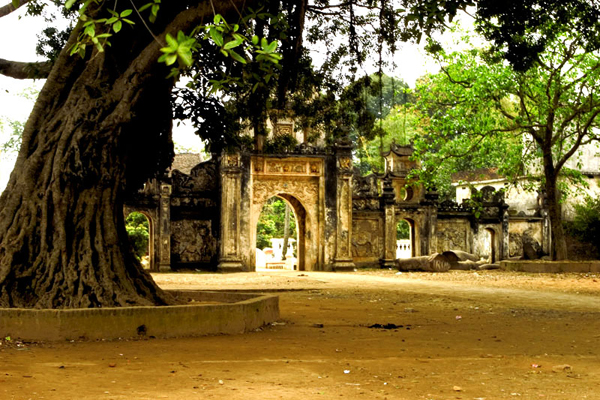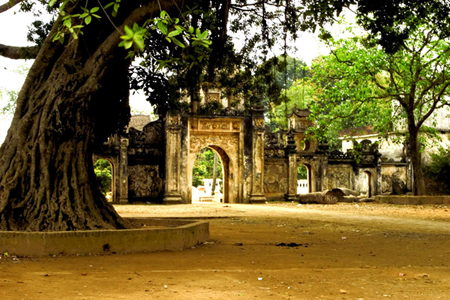Village Pagoda. This is a cultural center linked to the village, which is an economic and social cell of traditional Vietnam. Since long ago, the ancient Viet and Muong in the mountains have worshipped Buddha in grottos where stalagmites and rocks were supposed to be Buddhas. Some pagodas suggested dwelling houses with thatched roofs and made up of three compartments or gian, the altar being in the middle, but there was no statue of Buddha, just a piece of cloth on which was calligrapher the word Phat (Buddha).

The most ancient vestiges of pagodas go back to the XIth century (fragments of polished stone in Thay pagoda). Wooden frames left behind from the XIVth century (Thai Lac pagoda in Hai Hung and Boi Khe in Ha Tay) give us an idea of the architecture of village pagodas: a square basement (about 10m on the side and a height of 0.7m to 1m, 4 main pillars and 12 small ones. The low roof protrudes beyond the basement. The interior is decorated with numerous sculptures. In general, there is no surrounding wall. The cult room often has but one statue, sometimes there is only one stone altar without statue, (provided there is a symbolic sign, for instance, the Chinese character Phat: Buddha). From the XVIth century on, the number of statues has gradually increased.



